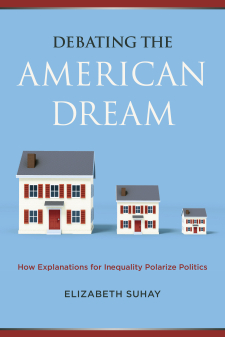The Effects of Rising Income Inequality on Rising Household Indebtedness
Was the long-term—and ongoing—rise in household income inequality a contributor to the recent financial crisis and subsequent recession? This is the question Matthew Drennan of UCLA proposes to explore in his analysis of changes in household income, consumption, assets, and liabilities during the period from 1984 to 2008. To frame his analysis, Drennan points to a number of substantive shifts in household economic characteristics over the past several decades. In addition to the rise in U.S. income inequality over time, he notes that between 1984 and 2007, the household savings rate declined by 10.2 percent, home mortgage debt increased from $1.3 trillion to $11.1 trillion (a 750 percent increase), and consumer credit excluding mortgage debt increased from $0.5 trillion to $2.6 trillion (a 420 percent increase). These shifts in debt dwarf the 249 percent net growth in disposable household income over the same period, suggesting that households had become much more highly leveraged by 2008. As the housing bubble burst and the subsequent economic crisis expanded, Drennan argues that these trends may have contributed to the length and severity of the recession. He also argues, since economic growth depends to a large degree on growth in consumption, if financial reform efforts curb consumption by constraining increases in household debt, U.S. economic growth may be lagging for an extended period.
Drennan will use several data sources, including the Survey of Consumer Finances, the Flow of Funds of the Federal Reserve, and the National Income and Product Accounts of the Bureau of Economic Analysis, to document the increased indebtedness of U.S. households over time. His primary analyses however, will be conducted with the Consumer Expenditure Survey (CE) collected by the Bureau of Labor Statistics. Using income quintiles, he intends to estimate the relationship between income and three dependent variables: household consumption, the change in assets-to-income ratio, and the change in liabilities-to-income ratio, holding constant a set of household characteristics and national economic variables. Drennan will then estimate a set of counterfactuals for the income quintiles in 2008 as if the 1984 aggregate income distribution prevailed for 2008. He hypothesizes that in comparison with the counterfactuals, the actual household estimates will show a decrease in the estimated relationships for consumption and assets as a percent of income and an increase in the estimated liabilities as a percent of income for the bottom four quintiles, but not for the top quintile. By comparing the counterfactual estimates for the quintiles with the actual data from 2008, the results may provide suggestive evidence of the role of increasing income inequality as a result of the financial crisis. Publications of the completed research will be targeted to both scholarly and general audiences.





